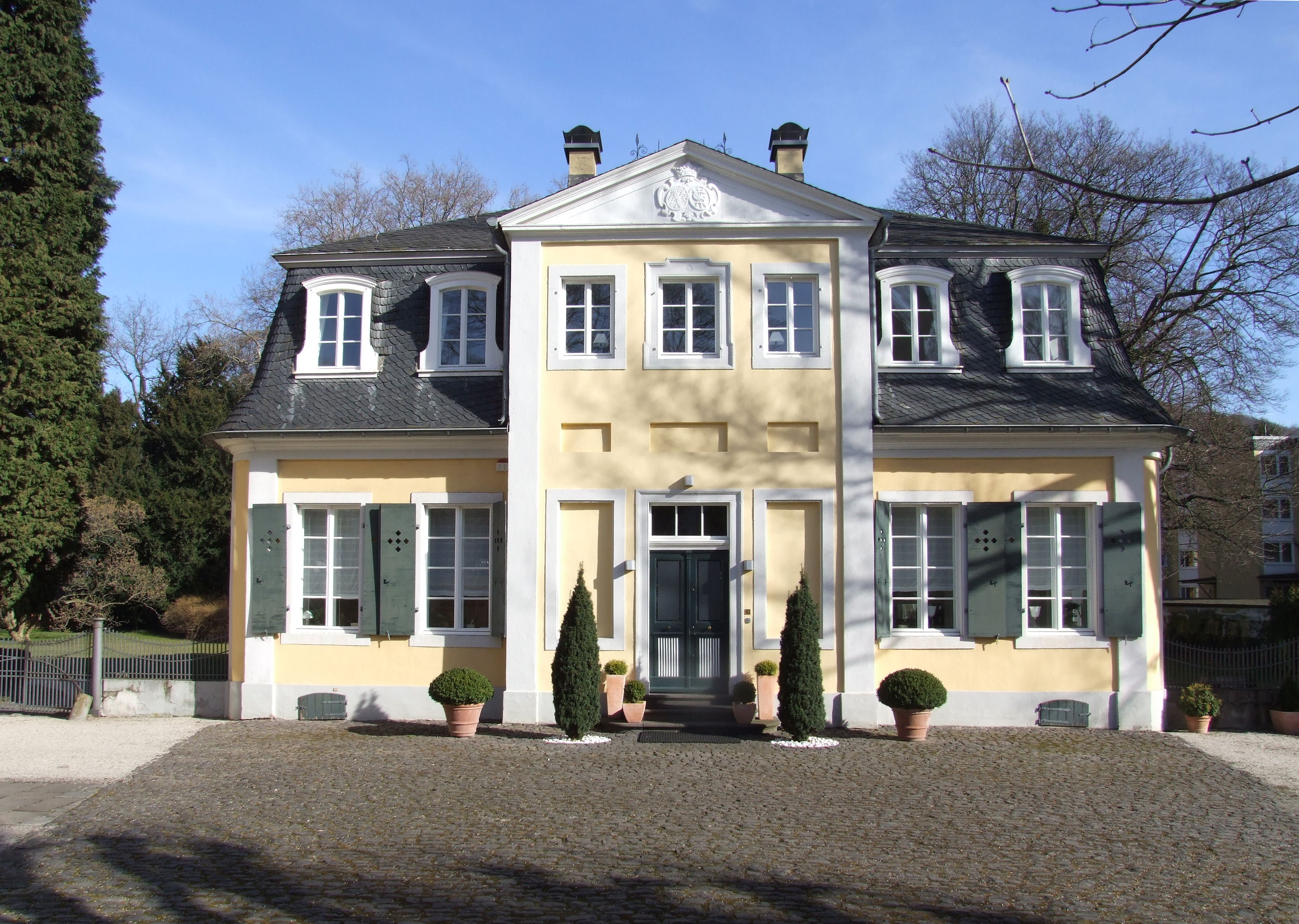|
Alexander, Prince Of Lippe
Alexander, Prince of Lippe () (16 January 1831 – 13 January 1905) was the penultimate sovereign of the Principality of Lippe. Succeeding to the throne in 1895, Alexander had his power exercised by a regent throughout his reign on account of his mental illness. Early life and ascension Prince Alexander of Lippe was born in Detmold the seventh child of Leopold II, Lippe's reigning prince and Leopold's consort Princess Emilie of Schwarzburg-Sondershausen (1800–1867). Prince Alexander for a time served as a captain in the Hanoverian Army. Alexander succeeded as Prince of Lippe on 20 March 1895 following the death of his brother Prince Woldemar. As Alexander had been showing signs of a mental illness and had been placed under legal restrictions in 1870 and in 1893, it was necessary for a regency to be established in Lippe. Alexander was the last male of the Lippe-Detmold line, the next senior line of the House of Lippe were the Counts of Lippe-Biesterfeld followed by the Count ... [...More Info...] [...Related Items...] OR: [Wikipedia] [Google] [Baidu] [Amazon] |
Principality Of Lippe
Lippe (later Lippe-Detmold and then again Lippe) was a state in Germany, ruled by the House of Lippe. It was located between the Weser river and the southeast part of the Teutoburg Forest. It originated as a state during the Holy Roman Empire, and was promoted to the status of principality in 1789. During this period the ruling house split into a number of branches, with the main line residing at Detmold. During the Reformation, Lippe had converted to Lutheranism in 1538 and then to Calvinism in 1604. From the demise of the empire in 1806, the principality was independent, but it joined the North German Confederation in 1866 and became one of the States of the German Empire in 1871. Over the course of the nineteenth century it gradually developed into a constitutional monarchy with moderate participation in government for the landed nobility. Its economy was overwhelmingly agrarian and among the weakest in the German Empire. After the last prince abdicated in 1918, it continued a ... [...More Info...] [...Related Items...] OR: [Wikipedia] [Google] [Baidu] [Amazon] |
Count Ernst Of Lippe-Biesterfeld
Ernst, Count of Lippe-Biesterfeld (''Ernst Kasimir Friedrich Karl Eberhard''; 9 June 1842 – 26 September 1904) was the head of the Lippe-Biesterfeld line of the House of Lippe. From 1897 until his death he was the regent of the Principality of Lippe. Early life and dispute He was born in Oberkassel, Bonn, Oberkassel the third child of Julius, Count of Lippe-Biesterfeld (1812–1884) and Countess Adelheid of Castell-Castell (1818–1900). On 17 May 1884 Count Ernst succeeded his father as the head of Lippe-Biesterfeld line of the House of Lippe. After the reigning Princes of Lippe, Biesterfeld was the most senior line of the princely house followed by the Counts of Lippe-Weissenfeld and the Princes of Schaumburg-Lippe. On 20 March 1895 the reigning prince of Lippe, Woldemar, Prince of Lippe, Prince Woldemar died childless. His heir was his brother Alexander, Prince of Lippe, Alexander who was incapable of ruling on account of a mental illness so a regency had to be established ... [...More Info...] [...Related Items...] OR: [Wikipedia] [Google] [Baidu] [Amazon] |
Princess Karoline Of Schwarzburg-Rudolstadt
Princess is a title used by a female member of a regnant monarch's family or by a female ruler of a principality. The male equivalent is a prince (from Latin ''princeps'', meaning principal citizen). Most often, the term has been used for the consort of a prince, or for the daughter of a monarch. A crown princess can be the heir apparent to the throne or the spouse of the heir apparent. Princess as a substantive title Some princesses are reigning monarchs of principalities. There have been fewer instances of reigning princesses than reigning princes, as most principalities excluded women from inheriting the throne. An example of a princess regnant is Constance of Antioch, princess regnant of Antioch in the 12th century. Since the president of France, an office for which women are eligible, is ''ex-officio'' a co-prince of Andorra, then Andorra could theoretically be jointly ruled by a princess. Princess as a courtesy title Descendants of monarchs For many centuries, the t ... [...More Info...] [...Related Items...] OR: [Wikipedia] [Google] [Baidu] [Amazon] |
Günther Frederick Charles I, Prince Of Schwarzburg-Sondershausen
Günther, Guenther, Ginther, Gunther, and the variants Günter, Guenter, Guenther, Ginter, and Gunter, are Germanic names derived from ''Gunthere, Gunthari'', composed of '' *gunþiz'' "battle" (Old Norse '' gunnr'') and ''heri, hari'' "army". Gunder and Gunnar are the North Germanic equivalents in Scandinavia. The name may refer to: People *Günther (given name) * Günther (singer), the stage persona of Swedish musician Mats Söderlund *Gunther (wrestler), professional wrestler signed to WWE * Günther (surname) Places * Gunther Island, in Humboldt Bay, California * Guenther, Wisconsin, a town in Marathon County Ships *, a number of ships with this name Fictional characters * Gunther, a character in the television show ''Friends'' * Gunther Magnuson, a character in '' Kick Buttowski: Suburban Daredevil'' * Günther Bachmann, a character in the film '' A Most Wanted Man'' * Gunther Berger, a character in the '' Luann'' comic strip * Gunther Breech, a character in the Cana ... [...More Info...] [...Related Items...] OR: [Wikipedia] [Google] [Baidu] [Amazon] |
Princess Pauline Of Anhalt-Bernburg
Pauline Christine Wilhelmine of Anhalt-Bernburg (also: Princess Pauline of Lippe; 23 February 1769 – 29 December 1820) was a princess consort of Principality of Lippe, Lippe, married in 1796 to Leopold I, Prince of Lippe. She served as the regent of Principality of Lippe, Lippe during the minority of her son from 1802 to 1820. She is regarded as one of the most important rulers of Lippe. On 1 January 1809, she abolished serfdom by princely decree. She managed to keep the principality independent during the Napoleonic Wars. She wrote a constitution, in which the power of the estates of the realm, estates was reduced. In the collective historical consciousness of the Lippe population, however, she is best remembered for her social goals. Influenced by French reformist writings, she founded the first day care center in Germany, a labor school for neglected children, a voluntary work camp for adult charity recipients and a health care institution with first aid center. Life P ... [...More Info...] [...Related Items...] OR: [Wikipedia] [Google] [Baidu] [Amazon] |
Leopold I, Prince Of Lippe
Leopold I of Lippe (2 December 1767 – 5 November 1802) was a Prince of Lippe. Biography Leopold I was born in Detmold the son of Simon August, Count of Lippe-Detmold (1727–1782), and his second wife, Princess Leopoldine of Anhalt-Dessau (1746–1769). He received his education in Dessau, and when he reached 18 he went to study at the University of Leipzig. He succeeded his father as Count of Lippe-Detmold on his death on 1 May 1782, and remained Count until Lippe was raised to a Principality of the Holy Roman Empire in 1789. In 1790, a mental disorder was diagnosed, and he was incapacitated by the Imperial Chamber Court; in 1795, the guardianship was conditionally lifted after an improvement occurred. He died in Detmold and was succeeded as Prince by his eldest son, who became Leopold II. Marriage and children He was married to Pauline Christine of Anhalt-Bernburg (23 February 1769 – 29 December 1820), daughter of Frederick Albert, Prince of Anhalt-Bernburg, and Lo ... [...More Info...] [...Related Items...] OR: [Wikipedia] [Google] [Baidu] [Amazon] |
Princess Emilie Of Schwarzburg-Sondershausen
Princess is a title used by a female member of a regnant monarch's family or by a female ruler of a principality. The male equivalent is a prince (from Latin ''princeps'', meaning principal citizen). Most often, the term has been used for the consort of a prince, or for the daughter of a monarch. A crown princess can be the heir apparent to the throne or the spouse of the heir apparent. Princess as a substantive title Some princesses are reigning monarchs of principalities. There have been fewer instances of reigning princesses than reigning princes, as most principalities excluded women from inheriting the throne. An example of a princess regnant is Constance of Antioch, princess regnant of Antioch in the 12th century. Since the president of France, an office for which women are eligible, is ''ex-officio'' a co-prince of Andorra, then Andorra could theoretically be jointly ruled by a princess. Princess as a courtesy title Descendants of monarchs For many centuries, the t ... [...More Info...] [...Related Items...] OR: [Wikipedia] [Google] [Baidu] [Amazon] |



